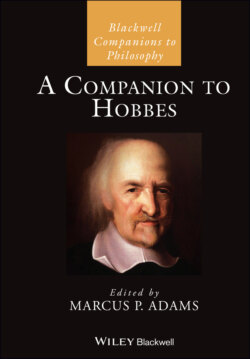Читать книгу A Companion to Hobbes - Группа авторов - Страница 12
2 The Organization of A Companion to Hobbes
ОглавлениеThe ordering of chapters in the present volume has been modeled after the manner in which Hobbes presents his philosophy in his major works, and so it has four sections devoted to Hobbes’s thought itself: Part I (First Philosophy, Mathematics, and Natural Philosophy), Part II (Human Nature and Morality), Part III (Civil Philosophy), and Part IV (Religion). The chapters in Part V (Controversies and Reception) consider the reception of Hobbes’s ideas by his contemporaries and by later figures. The diversity of the topics discussed by the chapters of Part V reflects the engagement of critics with the different parts of his philosophy, as well as the fact that many of his interlocutors saw those parts as deeply interconnected with one another.
Considering Hobbes’s presentation of topics exposes a key fault-line present in his thought: the line between natural bodies and political bodies. If readers attend just to the Table of Leviathan chapter 9, discussed already, and to the distinctions between the parts of Hobbes’s works, this line between the natural and the political may seem clear and unproblematic. But the line between these two kinds of bodies is not precise, for even if the “Science of just and uniust” is part of the consequences from natural bodies, justice and injustice themselves do not result from human bodies considered on their own, unlike sensation or digestion. Indeed, Hobbes declares that “Justice, and Injustice are none of the Faculties neither of the Body nor the Mind” but are instead “Qualities, that related to men in Society, not in Solitude” (Hobbes 2012, 296; 1651, 63). This fault line in Hobbes’s thought figures in the discussions of a number of the chapters of the volume: Abizadeh (Chapter 6), Slomp (Chapter 7), Field (Chapter 8), Lloyd (Chapter 9), Green (Chapter 10), Brito Vieira (Chapter 11), and Rhodes (Chapter 12).
